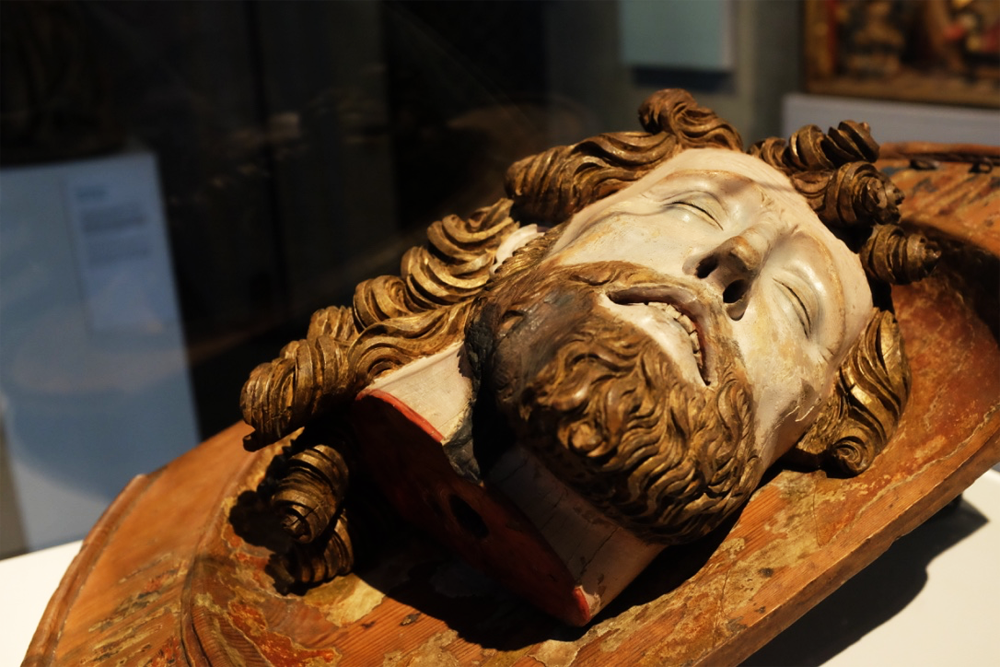
If you go enough places in a short enough span of time, weird preferences emerge. Mine is that I’m kind of… over… cathedrals, something I’ve explored a little before. They are beautiful and historic and many things, yes. But I am not Catholic, and too many of my friends who were raised Catholic had some really terrible times because of it. It’s hard for me to walk into a building created with money gathered by means I probably would consider questionable at best and have a jolly time looking at the lovely ceilings. In my last couple of trips, I’ve backed off of considering historic churches as a better use of my time in a place.
Sweden is now nearly 500 years from their last Catholic days. Even before I learned that, moving through their religious spaces felt… different to me. Part of it was recognizing some visual vocabulary from my own Lutheran upbringing – the way hymn numbers were posted on the walls, for instance, gave me some unlikely flashbacks to a certain church in Columbia, Illinois in the late 80s and early 90s.
But there was also a different sort of humanity in the altarpieces I saw. I noticed it for first time at the Historiska Museet, the Swedish history museum. This exhibit included pieces from the 12th to 16th centuries, before the reformation, but it still felt… different to me, as compared to contemporary religious art I’ve seen in other countries.
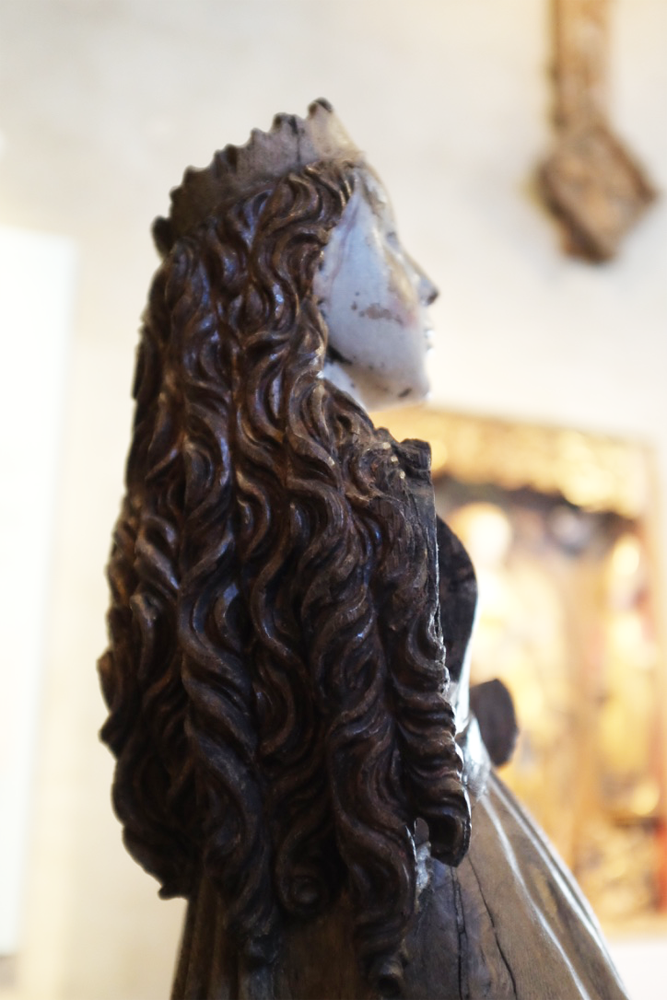
My last proper art class was my freshman year of college, and I honestly didn’t enjoy it very much. I always fear that I’ll be talking out of my ass when addressing things like this on the blog. But small details, like the perfect pattern of carved curls above, keep me wanting to bring these little humble bits to you.
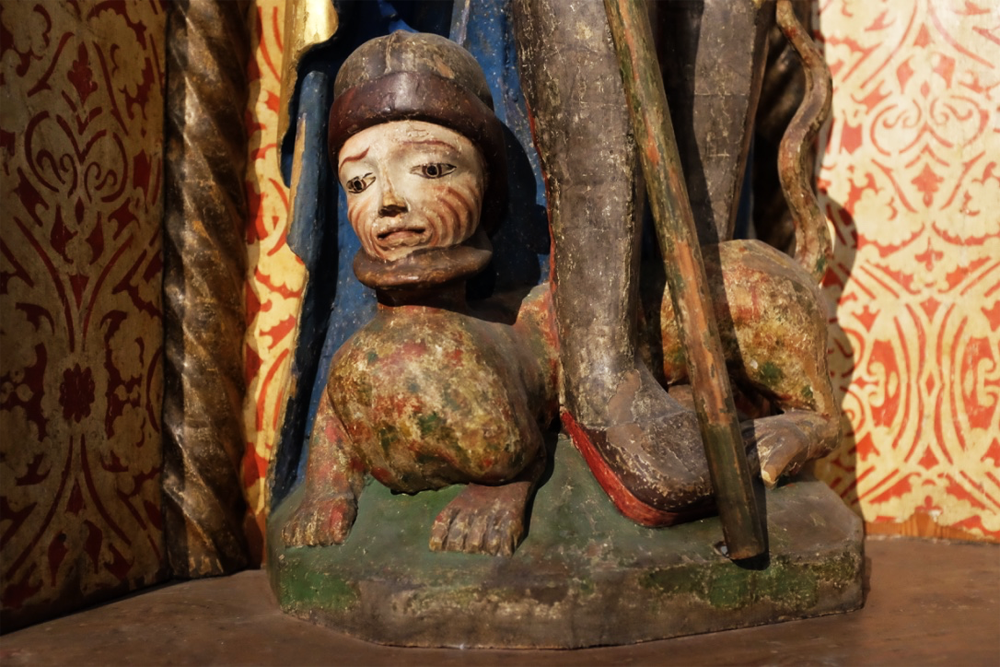
Like, I have to imagine this looked like someone the carver was not on good terms with. Like the “stereotypical Pole” carved into the ship at Vasamuseet or the man-faced dog at Waiting for the Interurban, this face is too specific not to be aimed at someone. I’d do the same, were I in this line of work.
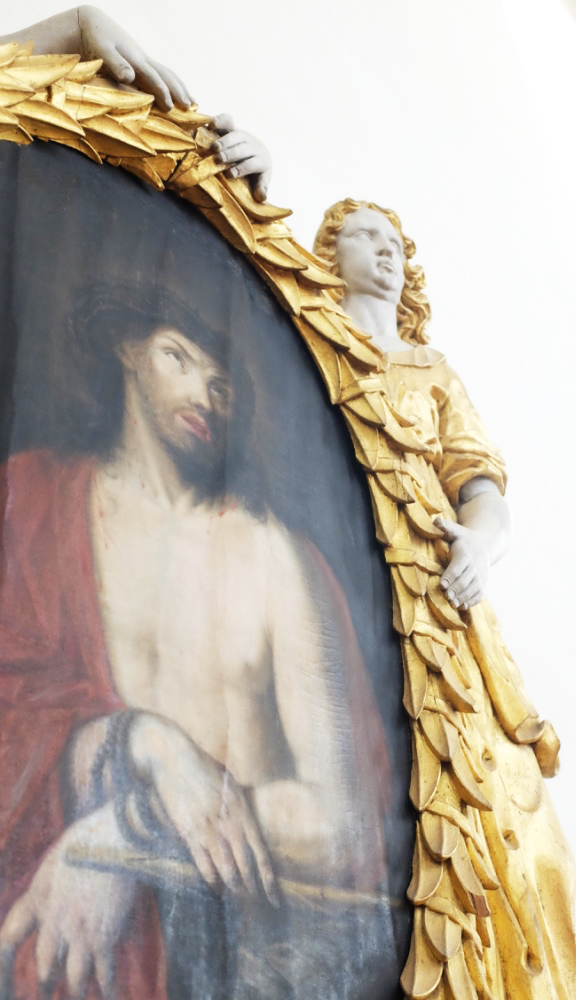
I loved the combination of this over-it Jesus and his pissed-off, gilded companion. I truly don’t know if I saw these little moments differently because I was alone, because it’s a visual tradition that’s a little more familiar to me, or because I was able to get uncommonly close to these centuries-old pieces. There were occasional guards, but most of these had no protective glass or plastic. I was able to circle and get (respectfully) close, seeing carving marks and paint strokes in a way I seldom or perhaps never have.
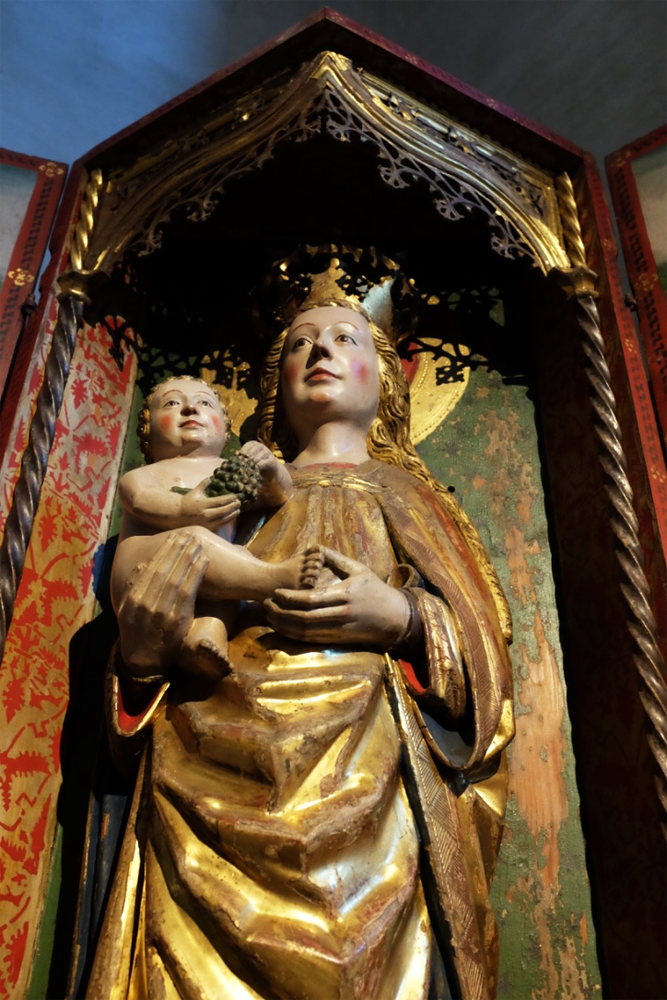
So often, I find the faces in pieces like this to be stylized enough that the humanity is gone, which I think robs these stories of a lot of immediacy. I liked this hopeful Mary and her grape-holding baby, the shared roundness of their chins. There’s a warmth I haven’t often seen, or at least not been able to perceive.
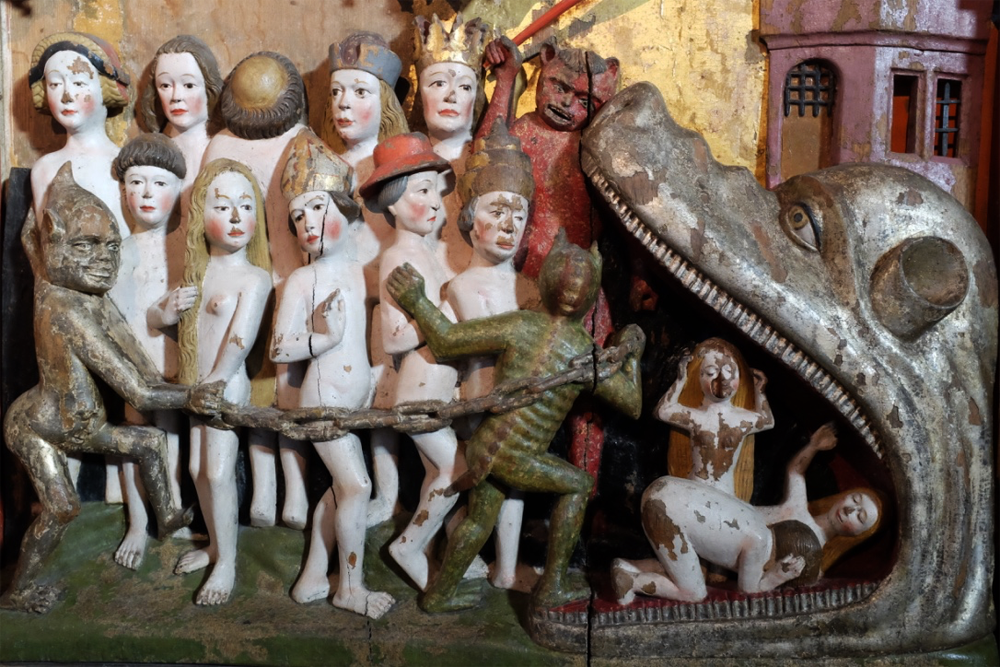
I also enjoyed how strange and graphic it got sometimes (which also reminded me of the Memling Museum). The ribs on that demon, the little seal ears of their giant friend, the blasé boredom of the blond woman in the front. “Naked devouring?” she’s thinking. “Sure, if we really must.”
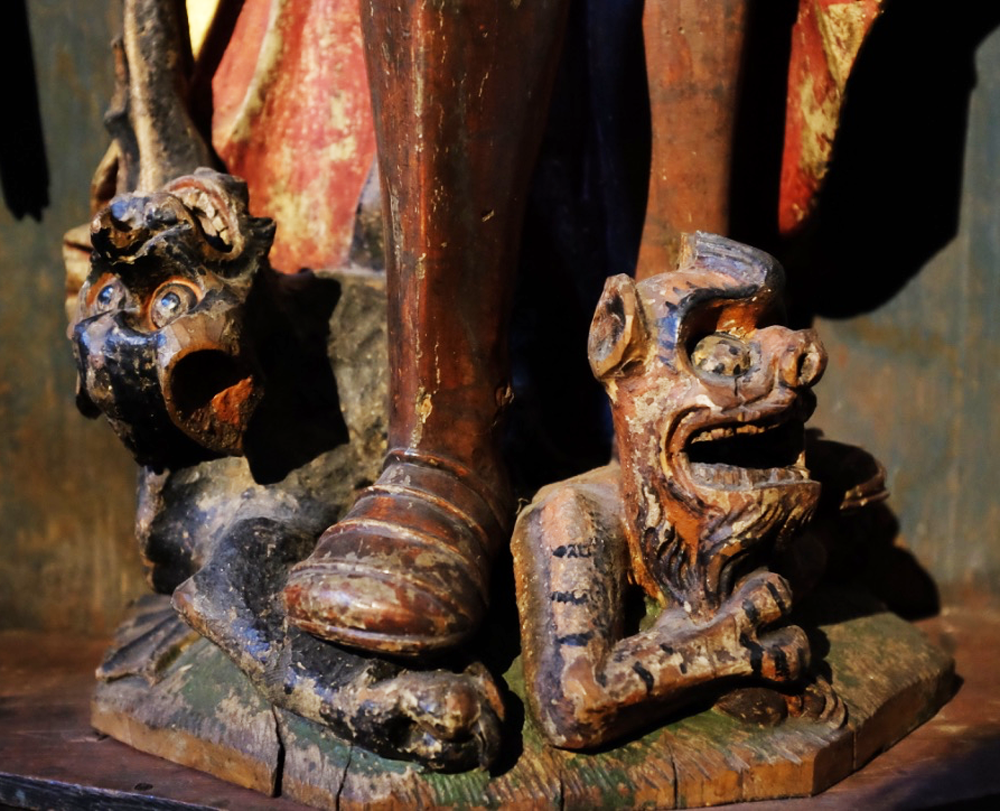
I think people who believe in demons and such are kinda fascinating. I wonder if they still picture guys like this or if their visualizations have changed with more modern influences. Do they look like the dog-gargoyles from Ghostbusters? Like horror movie monsters?
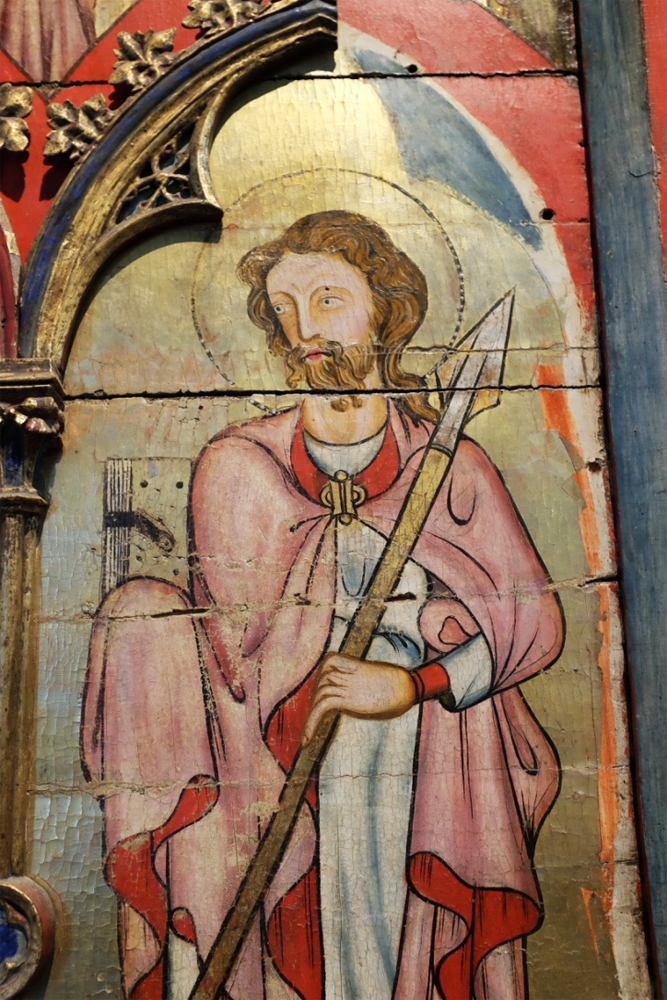
Because the good guys could be awfully strange-looking too.
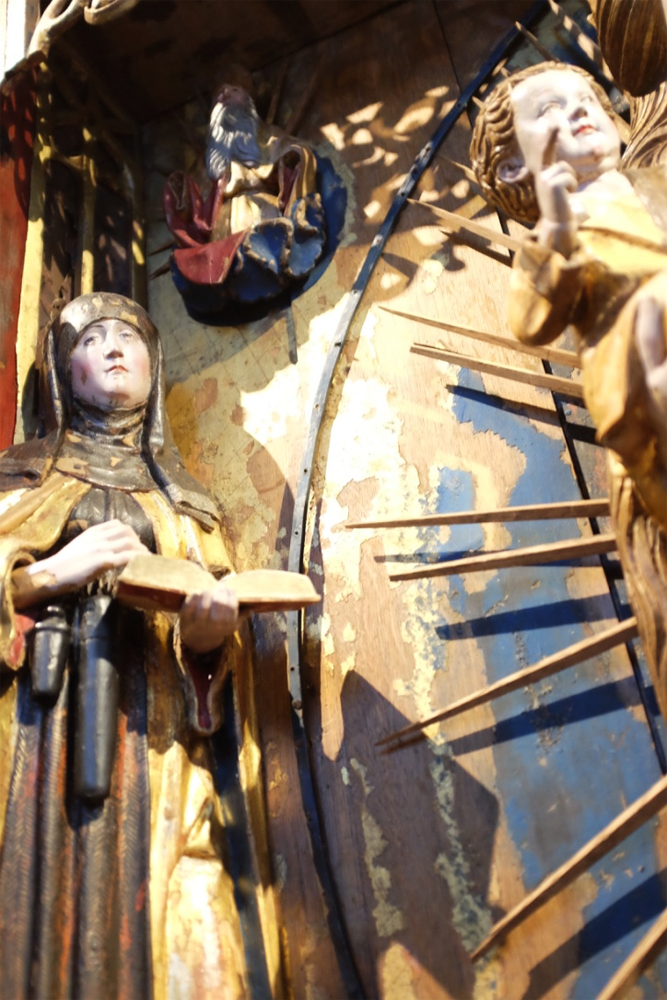
Maybe it’s a result of the different kinds of artisans in Sweden, or Sweden’s current more secular ways – or just my own mood that day. But I enjoyed this room of altarpieces in a way that religious art has rarely touched me. Historiska Museet was a bit of an accident for me – “Oh, hey, it’s 2 pm and I seem to be near a major historical museum” – and ended up being a grand surprise full of Vikings and art and layered queer history and all manner of surprises.
I had a similarly enlightening time at Iceland’s national history museum. Time to track down the American version, I think. It’s a strange thing to travel over the top of the world, only to be reminded of how weird it is to get to my age without visiting my own country’s capital.
In time.

